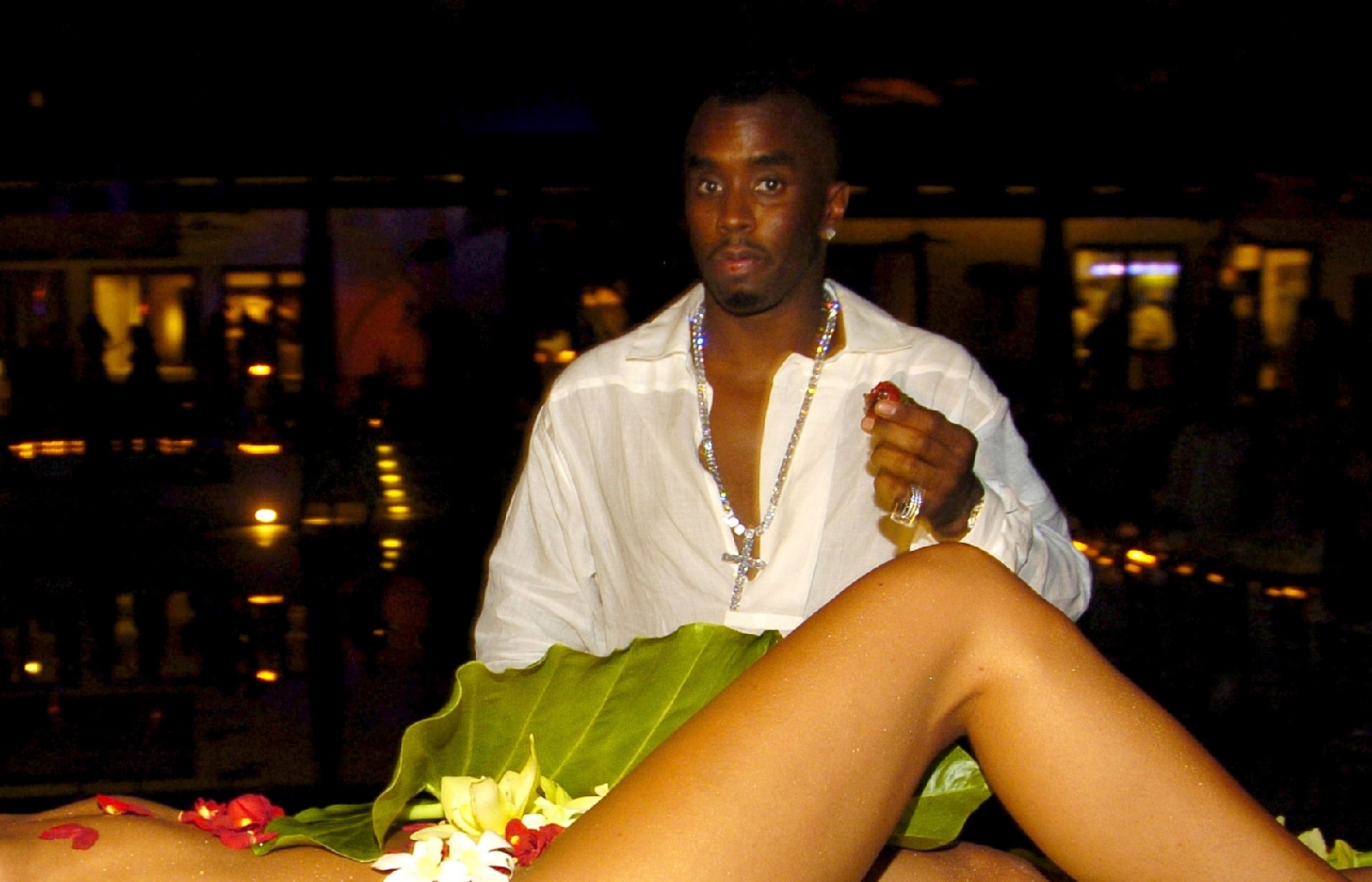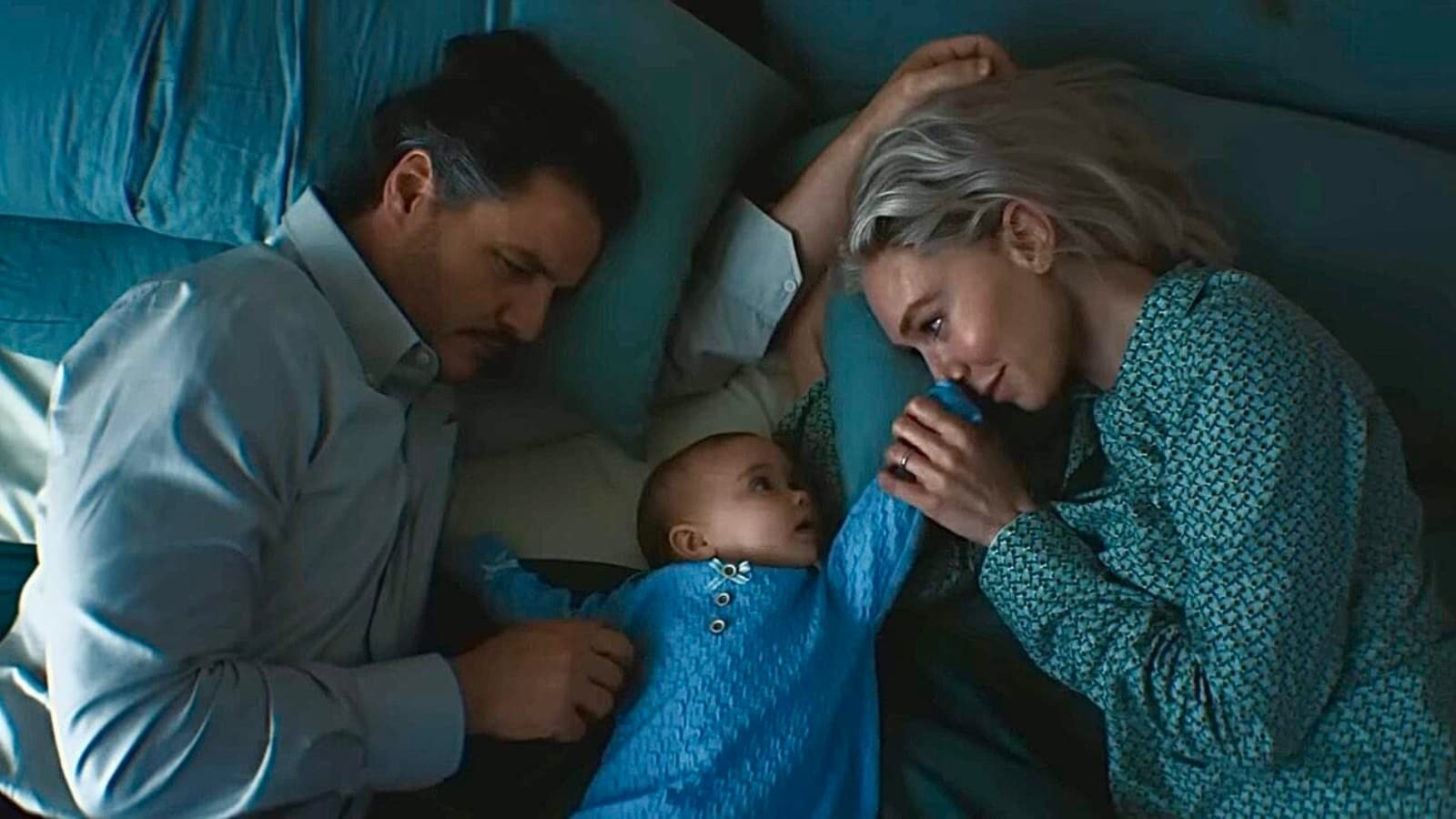Sean 'Diddy' Combs and the viral conspiracy machine: How a 2004 sushi party became QAnon's new obsession
A glittering mansion in Miami played host to one of the early 2000s’ most extravagant parties, thrown by music mogul Sean "Diddy" Combs. That night in 2004, celebrities from Diana Ross to Will Smith mingled under soft lights as champagne flowed and music pulsed through the crowd. The spectacle’s focal point: a nude woman adorned in sushi, turning heads as she lay motionless atop a banquet table. For guests, it was lavish and surreal. For the internet conspiracy community two decades later, it was something far more sinister.
Kevin Mazur/WireImage.com
Images from that event, once symbols of celebrity excess, resurfaced online in 2024 during Combs’ high-profile criminal trial. But to a vocal segment of QAnon followers, those visuals weren’t just party snapshots — they were decoded as evidence of occult ritual, cannibalistic symbolism, and satanic rites. The sushi-covered woman was reframed as part of a ceremony. Diddy wasn’t a host — he was an alleged high priest in a conspiracy they believed linked Hollywood elites to child trafficking and ritual abuse.
With Combs facing federal charges that included sex trafficking and prostitution-related offenses, the stage was set for QAnon to reinterpret the moment through its established mythology. Photos of a decades-old party were folded into a sprawling web of speculation, quickly shared across social platforms and amplified by viral content creators fluent in conspiratorial shorthand.
The revival of interest in Combs came during a period of relative quiet for QAnon. Originally launched in 2017, the movement — built on theories involving Satan-worshipping elites, hidden tunnels, and Donald Trump as a covert savior — had lacked new material for some time. The Combs saga presented fresh fuel. Allegations of secret parties, abuse, and kompromat echoed themes the movement had clung to since the Epstein scandal.
Contributing to this resurgence were individuals who once circled Combs' orbit. Gene Deal, a former bodyguard, became a regular presence on YouTube, recounting cryptic stories — including claims of bird sacrifices in Central Park. His accounts blurred fact and fiction, but that hardly mattered to an audience already primed to believe. Every new anecdote or interview clip was framed as a puzzle piece.
Then came a torrent of civil lawsuits, beginning with singer Cassie Ventura’s explosive accusations of abuse, which settled within a day. Soon after, producer Rodney “Lil Rod” Jones Jr. detailed further allegations involving druggings and surveillance. The lawsuits aligned perfectly with QAnon narratives, feeding claims that Combs had long maintained a network of manipulation and control hidden behind celebrity glamour.
Social media accelerated the spread. TikTok, YouTube, and X (formerly Twitter) saw surges in content combining old footage with dramatic music and captions alluding to ritualistic practices. Even AI-generated media entered the conversation, as one viral rumor falsely claimed Justin Bieber had released a track hinting at Combs’ parties. The platforms rewarded this content with millions of views, and the boundaries between speculation and belief became increasingly blurred.
Offline, Combs was indicted and eventually found guilty on two lesser charges — transportation for the purpose of prostitution — while being acquitted of the more severe allegations. His trial, though gripping, lacked the dramatic revelations QAnon expected. Still, for believers, that was more proof. The absence of fireworks confirmed the existence of a deeper cover-up. Every acquittal, in their minds, could only mean the “deep state” was protecting its own.
The conspiracy didn't lose steam post-verdict. Instead, it adapted. Some reimagined Combs not as a villain but as a suppressed whistleblower, silenced for knowing too much. This narrative pivoted into Pastel QAnon — a more socially palatable variant of the movement that blends self-help aesthetics with darker undertones. Stories of abuse involving powerful men and vulnerable women found a new, receptive audience, particularly on platforms like Instagram, where emotional storytelling often trumps hard evidence.
Throughout it all, Combs has denied all allegations and continues to fight mounting civil litigation. But beyond the courtrooms and headlines, his story has become something else entirely — a symbolic battleground in a culture war where fact often plays second to narrative.
For the conspiracy-fueled corners of the internet, reality remains fluid. A sushi table from 2004 has become a stand-in for supposed Satanic ritual. And in this new digital mythology, Diddy isn’t merely a man on trial. He’s become the latest character in a never-ending story — one where the truth can always be reshaped.










